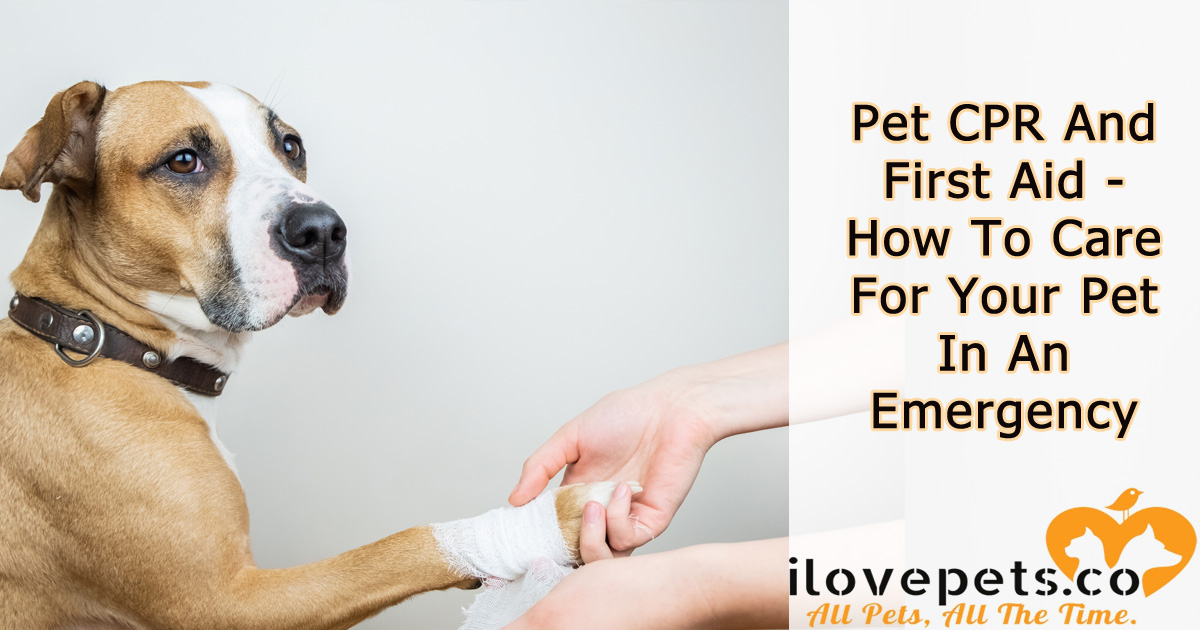
What would you do if your pet’s life was in danger?
Any pet can have a medical emergency, no matter their age or health condition. Unfortunately, it can be difficult to access emergency veterinary services, especially because there are so few emergency 24-hour vets, and even fewer pet ambulance services.
Every pet owner should know first aid. You should know how to take your pet’s vitals, how to keep them stable in an emergency, and when to seek further veterinary care.
How To Read Vital Signs In Pets
It’s easy to read your pet’s vital signs. You can practice on your pets today, so if there is ever an emergency, you will be able to tell if their vitals are different than usual.
Checking Your Pet’s Temperature
For Dogs: Normal body temperature for dogs is between 99.5 and 102.5F degrees, while a temperature above 103 degrees indicates a fever. If your dog’s temperature climbs to 106 degrees or above, it can cause organ damage.
For Cats: Normal body temperature for cats is the same as a dog’s, between 99.5 and 102.5 degrees. Over 103 degrees indicates a fever, while 106 degrees or over can lead to organ damage.
Seek veterinary care if your pet’s temperature is above or below the normal range. In the meantime, cool your pet down by applying damp towels to their paws, ears, armpits and belly, or keep them warm with blankets and/or a heating pad, if possible.
Rectal vs Digital Thermometers
Checking The Color Of Your Pet’s Gums
Pale gums can indicate dehydration and/or low blood circulation due to heart failure or anemia, while dark red gums are often caused by inflammation due to gingivitis.
A healthy pet has pink-to-light-pink gums, though many pets have black markings on their gums that may make it difficult to gauge their condition.
An even better indicator of circulation is gum refill time. Gently press a fingertip to your pet’s gums to create a pale spot. The spot should return to its original, pinkish color in 1-2 seconds. A longer gum refill time indicates poor circulation,
Check your pet’s gums today and make a note of how they look when they’re healthy.
Checking Your Pet’s Respiration Rate
Heavy breathing or sedated breathing are both signs of an emergency. To check your pet’s respiration rate, set a timer for 15 seconds while you count their breaths. Then, multiple by four.
For dogs, anywhere from 10 to 35 breaths per minute is normal. Smaller animals typically have a higher respiration rate. For cats, the norm is 20 to 30 breaths.
Because the normal range is so wide, it’s important to check your pet’s resting respiration rate while they are healthy so you’ll know if it is abnormal for them during a possible emergency. You can check respiration rate by watching your pet’s chest movements.
Checking Your Pet’s Pulse Rate
A mammal’s heart is on the left side of their chest, just like us. You can check for your dog or cat’s pulse by resting two fingers just behind their left foreleg.
Set a timer for fifteen seconds, then count their heartbeats. Multiple by four to get their heart rate.
For dogs, the average healthy heart rate is 60 to 140 beats per minute. The smaller the dog, the faster the heartbeat.
For cats, the average healthy heart rate is 140 to 220 beats per minute.
Because these ranges are so wide, you should check your pet’s resting heart rate while they are healthy so you will know what to look for in the event of an emergency.
How To Stop Bleeding And Dress A Wound
If your pet has a small, shallow cut that is seeping blood, you can likely treat them at home. However, if the cut is deep, and there is significant blood loss, they will need emergency veterinary care, and you will need to try to stop the bleeding in the meantime.
First, clean the wound. You may need to use a scissors to cut away hair. Use saline solution to wash the wound. Use 2% Chlorhexidine to disinfect. Apply gauze, placing direct pressure on the wound, and secure with medical tape. If possible, raise the wounded area above the heart to slow bleeding.Do not remove the bandage to check the status of the bleeding. If blood soaks through the first layer of gauze, add another layer.
When And How To Induce Vomiting
If your pet has ingested chocolate, xylitol, or another toxin, every second counts. The toxic will begin to leak into their bloodstream through their digestive system. Making them vomit right away will reduce the amount of the toxic that enters their bloodstream.
It’s helpful to keep 3% hydrogen peroxide in your pet first aid kit. A small dose irritates the stomach lining to help your pet bring up the contents of their stomach.
Even so, inducing vomiting is not always the right choice. If the ingested object is sharp, like a cooked bone, it could cause more damage on the way up through the esophagus. If your pet is unconscious or barely conscious, they could aspirate on their own vomit.
Always call your vet, emergency vet, or ASPCA Animal Poison Control Center: (888) 426-4435 before inducing vomiting. They will likely walk you through the steps over the phone.
CPR For Pets
If you cannot find a heartbeat and your pet is not breathing, you’ll need to perform CPR.
First, look into the mouth for any obvious blockage, and remove it, if present.
You’ll start with 30 chest compressions at a rate of 100-120 compressions per minute, or around 3 per second. As you’ll need to squeeze the heart, compressions should be hard and fast.
After 30 compressions, close the muzzle and give two breaths into the nose. Continue to give 2 breaths after every 30 compressions until the animal begins to breathe on their own again.
If ten minutes of CPR does not work, you can stop – it is unlikely that you would be able to successfully revive the animal after that.
CPR is tricky. You’ll need to learn different positions for animals of different sizes, and it’s best to have an instructor show you just how much force to use. Watching online videos is the next best thing, but we still recommend an in-person class.
Resources And Numbers To Know
Keep a pet first aid book on-hand, in your purse or car so you’ll always have access to step-by-step first aid procedures in an emergency.Take A Pet CPR Class
Get your PetTech certification with a local, in-person course from a pet CPR instructor.
Take the 35 minute online pet first aid course from American Red Cross.
Emergency 24-hour Veterinary Hospital
Grand Prairie: Airport Freeway Emergency Vet Hospital – (817) 571-2088 open 24/7.
Have you ever experienced a pet medical emergency? What did you do?







Great tips! As they say knowledge is power and these come really handy in these emergency situations, when you can not get hold of a vet in the middle of the night.